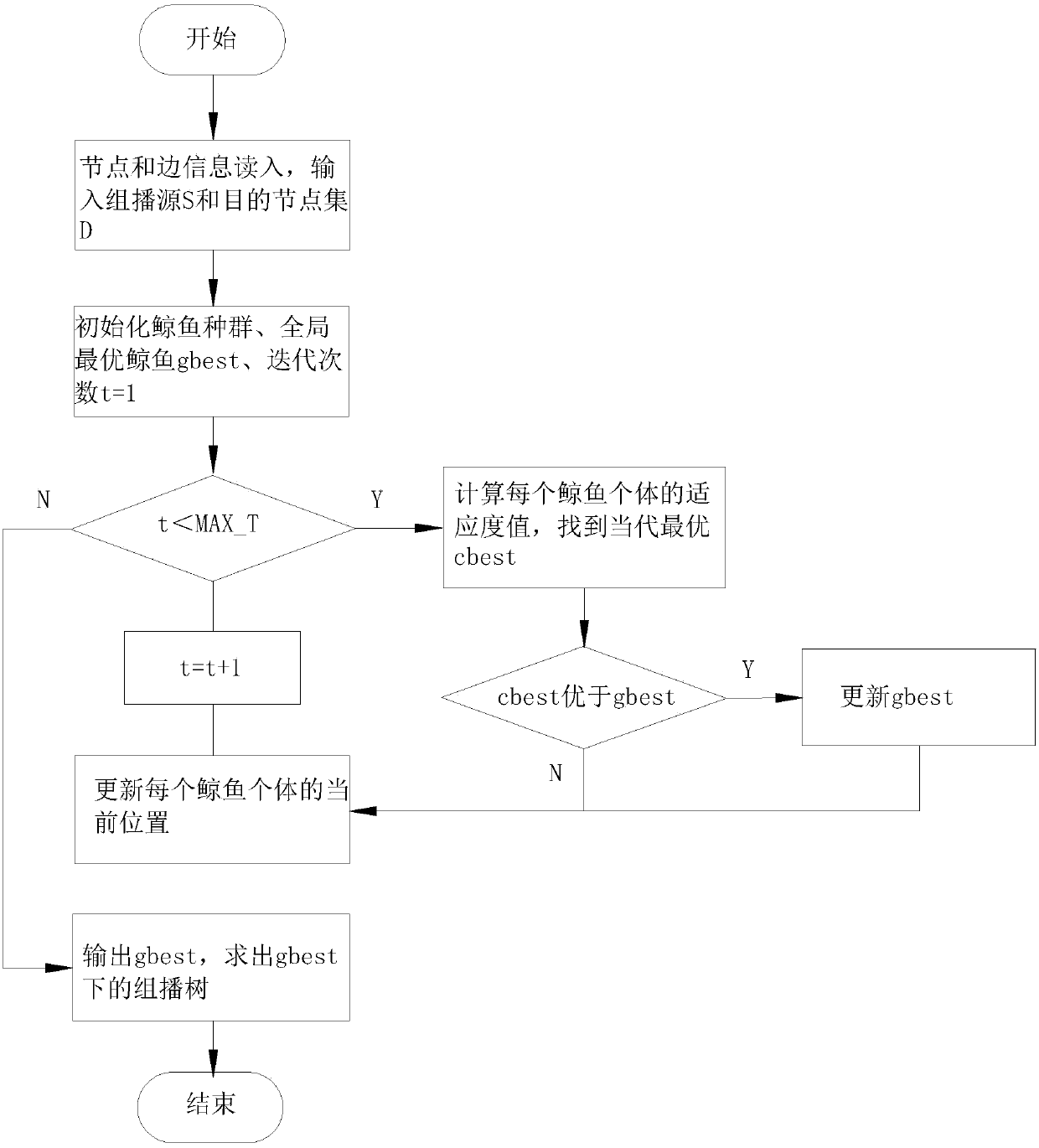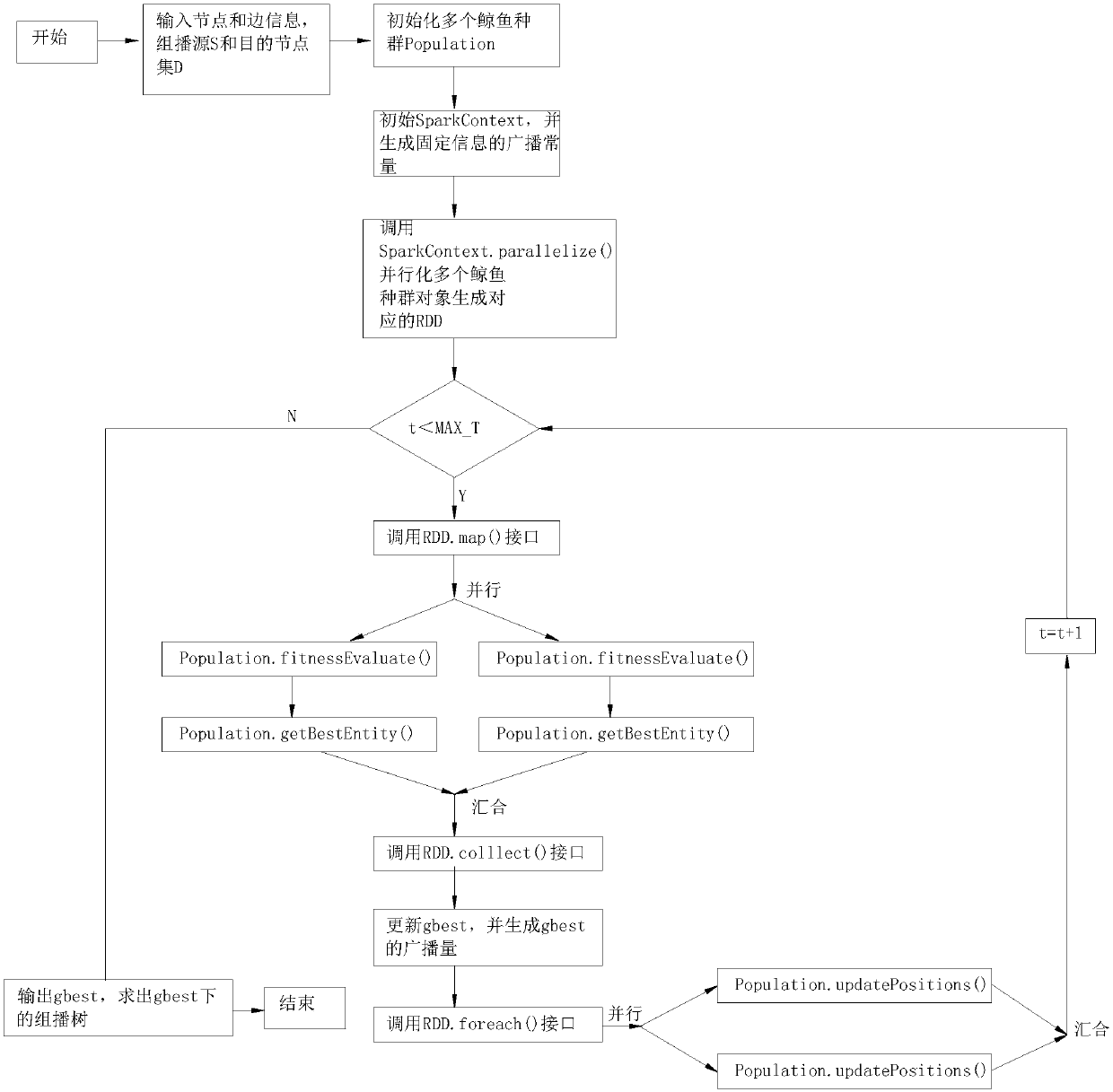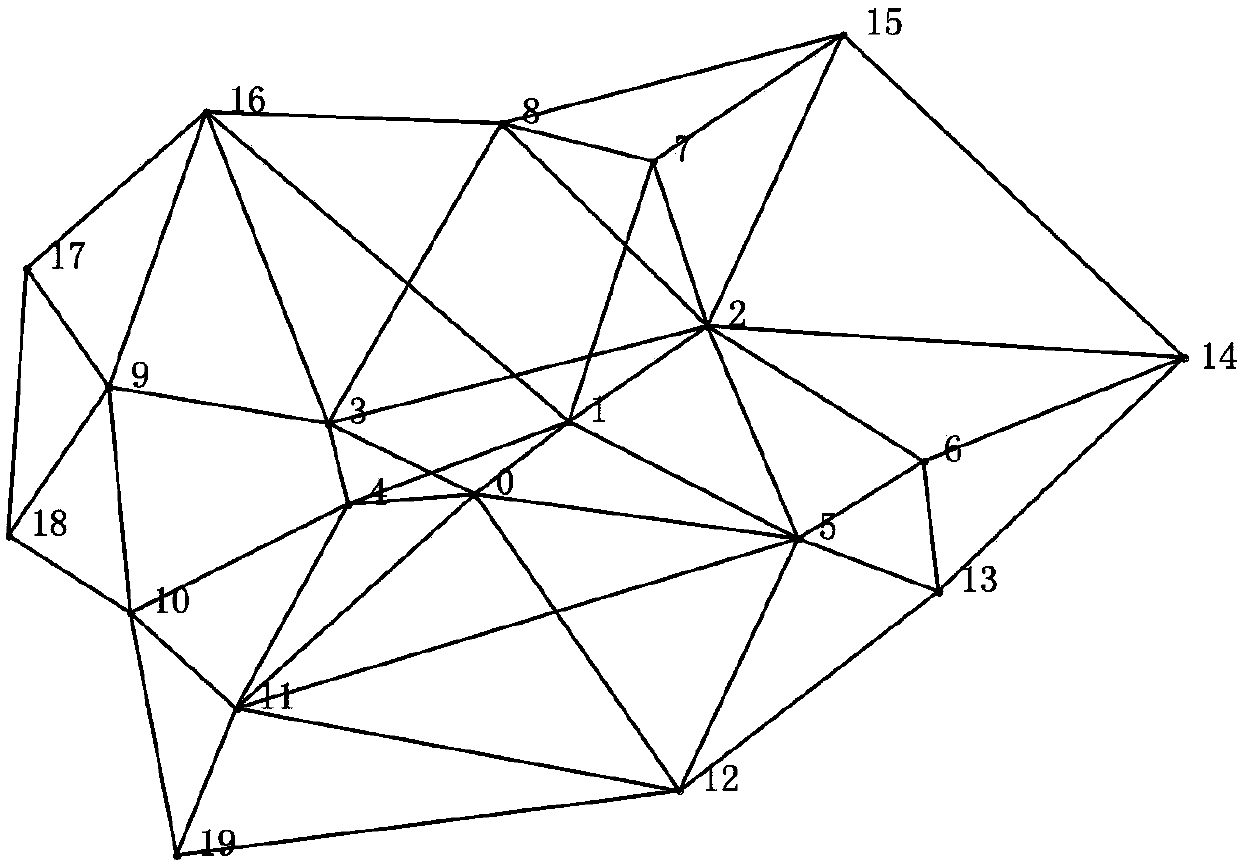Whale optimization algorithm-based multicast routing optimization method and application of whale optimization algorithm-based multicast routing optimization method to Spark platform
An optimization method and whale technology, applied in the field of computer networks, can solve problems such as slow convergence speed and complex multicast routing optimization process.
- Summary
- Abstract
- Description
- Claims
- Application Information
AI Technical Summary
Problems solved by technology
Method used
Image
Examples
Embodiment 1
[0173] Such as image 3 As shown, the shown network topology has a total of 20 nodes, the node numbers are 0-19, a total of 49 edges, the edge numbers are 0-48 (not shown), and each edge has a corresponding cost value (not shown ), randomly generated within (0,50).
[0174] It is assumed that the source node S of the multicast is 4, and the destination node set D={7, 13, 17}.
[0175] Suppose the whale population scale M=100, according to the step (2) in the multicast routing optimization method based on the above-mentioned whale algorithm to initialize all whale individuals, the position information of each whale is a binary array whose length is 49 (by edge coding), Each bit is 0 or 1, such as [0,1,1,0,1,...,1,0], and the initial fitness value of each whale is 999999.0. Create a globally optimal whale individual gbest outside the population, and its initialization method is described in step (2). Initialize the maximum number of iterations MAX_T=200, and the current numbe...
Embodiment 2
[0242] Embodiment 2, Embodiment 4, and Embodiment 6 all adopt the application of the multicast routing optimization method based on the whale algorithm in the stand-alone environment in the present invention, which is hereinafter referred to as MWOA.
Embodiment 3
[0243] Embodiment 3, Embodiment 5, and Embodiment 7 all adopt the application of the multicast routing optimization method based on the whale algorithm in the present invention on the Spark platform, and the method is hereinafter referred to as PMWOA for short.
[0244] Scenario 1: The number of network topology nodes is 100, the number of edges is 280, the multicast source node is 5, and the multicast destination node set {14, 23, 36, 47, 55, 67, 81, 92, 79}.
[0245] Scenario 2: The number of network topology nodes is 150, the number of edges is 370, the multicast source node is 27, and the multicast destination node set is {33,9,18,67,112,99,137,65,127,141,49,77}.
[0246] Scenario 3: The number of network topology nodes is 200, the number of edges is 542, the multicast source node is 121, and the multicast destination node set {191,7,29,43,167,143,128,97,73,62,14,34,157,108,59,88,111,136}.
[0247] Set the population size as 500 and the number of iterations as 200. Among ...
PUM
 Login to View More
Login to View More Abstract
Description
Claims
Application Information
 Login to View More
Login to View More - R&D
- Intellectual Property
- Life Sciences
- Materials
- Tech Scout
- Unparalleled Data Quality
- Higher Quality Content
- 60% Fewer Hallucinations
Browse by: Latest US Patents, China's latest patents, Technical Efficacy Thesaurus, Application Domain, Technology Topic, Popular Technical Reports.
© 2025 PatSnap. All rights reserved.Legal|Privacy policy|Modern Slavery Act Transparency Statement|Sitemap|About US| Contact US: help@patsnap.com



